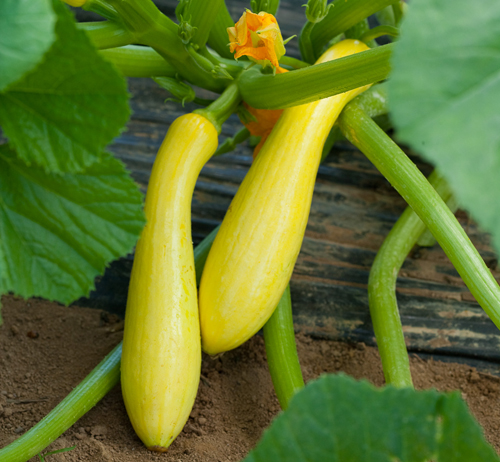Summer Squash
Summer squashes (Curcurbita pepo) are warm-season cucurbits that are harvested when the fruits are immature. The most common summer squash types include yellow (crookneck and straightneck) and zucchini. Also included in the summer squash group are scallop squashes and cocozelle. Summer squashes grow on plants with a bush growth habit, rather than vining.
Marketing
Direct marketing options for Kentucky-grown summer squash include farmers markets, community supported agriculture (CSA) subscriptions and roadside stands. Wholesale markets include Kentucky’s produce auctions, sales to local food retailers and large-volume wholesale shipments. Wholesale production tends to be more profitable when producers are able to use varieties and season-extension techniques to ship squash early or late in the season, when prices may be higher. Although not usually as profitable as other summer produce, summer squash is essential in a farmers market or roadside stand fresh vegetable mix. Some producers have discovered profitable niche markets selling edible squash blossoms to restaurants. Summer squash can also be utilized in value-added products such as breads and relishes.
Production
 Summer squash cultivars differ in fruit characteristics (shape and color), growth habit (open or compact bush), earliness and disease resistance. Crookneck squash typically have yellow skin with a crook or bend at the stem end, while straightneck are a yellow squash that tapers to the stem end but lacks the crook. Zucchini squash usually is long and cylindrical, though there are some that tend more toward round, with skin that can be various shades of dark green. The cocozelle squash, often referred to as Italian zucchini, are green with lighter stripes. Scallop squash types, such as Patty Pan, are circular and flattened with scalloped edges; the skin may be green, white, or yellow. Because of this diversity among summer squashes, it is important to select those varieties with the qualities in demand by the intended market. In addition, growers should select well-adapted cultivars with disease resistance whenever possible.
Summer squash cultivars differ in fruit characteristics (shape and color), growth habit (open or compact bush), earliness and disease resistance. Crookneck squash typically have yellow skin with a crook or bend at the stem end, while straightneck are a yellow squash that tapers to the stem end but lacks the crook. Zucchini squash usually is long and cylindrical, though there are some that tend more toward round, with skin that can be various shades of dark green. The cocozelle squash, often referred to as Italian zucchini, are green with lighter stripes. Scallop squash types, such as Patty Pan, are circular and flattened with scalloped edges; the skin may be green, white, or yellow. Because of this diversity among summer squashes, it is important to select those varieties with the qualities in demand by the intended market. In addition, growers should select well-adapted cultivars with disease resistance whenever possible.

